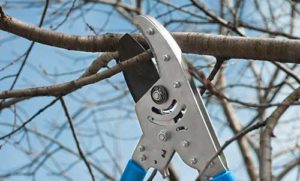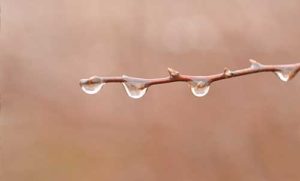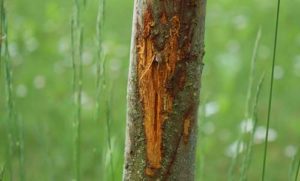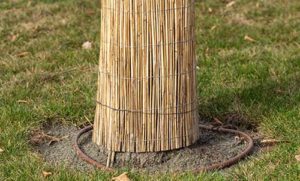Fall Tree Care: Your Guide to Healthy Trees This Fall
Even though trees are beginning to get ready for slower growth and maybe even dormancy over the winter, they still need proper care in the fall. Taking care of them in the fall—including pruning, watering, fertilizing, and protecting them from possible damage—helps ensure they start healthy and strong following the spring season.
Fall tree care is slightly different from spring and summer care, but it is as important as how you tend to your trees during the warmer months. The following tips should be added to your autumn to-do list, along with your regular yard and garden pre-winter maintenance.
Is fall/winter a good time to prune trees?
 Late fall is a great time to prune your trees. Active growth has slowed or halted entirely in preparation for the winter season. Plus, it is easier to see the overall structure or shape of the tree once the leaves have fallen to the ground.
Late fall is a great time to prune your trees. Active growth has slowed or halted entirely in preparation for the winter season. Plus, it is easier to see the overall structure or shape of the tree once the leaves have fallen to the ground.
- Start by pruning out any dead or diseased branches from the tree’s canopy. The primary reason for this is removing them minimizes the spread of disease come spring if any fungal spores or bacteria are still in the limbs. This also keeps branches from snapping under the weight of snow or from blustery winds, protecting your home and other structures from damage if they do fall.
- Perform any necessary structural pruning to reshape the tree if it’s gotten unruly or too tall. Always remove any interior branches that grow directly up into the canopy, or cross over one another. You always want your branches to grow outward and upward.
- Cut back branches that hang over your home and garage or above walkways and driveways.
- Prune off any suckers shooting up around the tree’s base and root collar or down low on the trunk.
Keep in mind your fruit trees may require specific pruning based upon when and where the fruits form on the tree. So before hacking away, make sure to consult a local nursery or look online for instructions from trustworthy sources. Extension services are great websites for information.
When pruning, always make sure your pruning tools are clean, sharp, and disinfected using either a dilute bleach solution or rubbing alcohol. Make pruning cuts as close to the branch or trunk as possible and cut on an angle to keep water from collecting on the cut. But never use a pruning sealer to seal the cut edges; allow the tree to heal the “wound” itself.
Should I water my trees in the fall/winter?

Deciduous trees are preparing for dormancy by dropping their leaves and slowing down their growth. As this happens, they are slowing their metabolic processes and need less water to survive. Regular watering—such as the 1-2” of water they need weekly—should be cut back at this time to prevent root rot due to waterlogging.
However, all types of trees need a good dose of water as they go into winter. Water insulates the soil, keeping it warmer than if it was dry, and trees need moisture so they don’t dry out when frigid air blows across branches in the winter.
Evergreen trees lose a significant amount of water through their needles as the cold, dry winter air blows across them. They need to store up as much water as they can in the fall to get through winter conditions with as little winter burn/winter injury as possible.
In late autumn, after the trees drop their leaves but before the ground freezes, give all of your trees a deep watering to ensure the water reaches their roots. They will take this water in and store it in their leaves/needles and trunk to draw on it when moisture is less available.
Is it necessary to fertilize trees, and is this a good time to do it?

An application of fertilizer helps them replenish the nutrients they used up in the summer and fall, especially if they are fruit trees, and helps harden the tree’s foliar tissues in preparation for winter. Fertilizer also allows them to build up a nutrient/resource reserve they can draw from. Remember that deciduous trees have lost their leaves for the season, so they can’t actively photosynthesize and produce new food.
Timing and formulation are essential. Apply a slow-release tree fertilizer in the late fall, making sure to time it so it’s applied a couple of weeks before the first hard freeze. Quickly available nitrogen may trigger new growth; applying too early may do the same if there’s a stretch of warm, nice weather after application. If new growth occurs, it is at risk of damage from an early frost or winter injury.
The goal of fall fertilization is to mimic nature. In forests and woodlands, a heavy layer of organic matter on the soil surface slowly provides nutrients throughout the winter. Hence, the tree is ready to take off and grow once spring temperatures begin climbing.
What can I do about deer damage in the fall/winter?

When deer remove the bark, it exposes the tree’s vascular system, allowing insects and diseases to get inside the tree.
- For larger trees, install deer fencing around them to keep deer from feeding on the bark. The fencing should be at least 6 to 8 feet high, so the deer can’t jump over it and far enough away they can’t lean over it to eat.
- Smaller trees can be wrapped with corrugated tree guards, or you can fashion your own product from PVC pipe.
If you have many trees within an area, it may be easier to install a perimeter fence versus putting up fencing around every tree.
You can also try to deter deer by hanging strongly scented soap, balloons, or strips of aluminum foil from the trees, or you can install ultrasonic repellents.
Should I wrap the trunks of my trees?

South and southwest exposure are the most susceptible. The sun heats the bark, causing the tissues to become active. When the temperatures drop quickly, or the sun unexpectedly goes behind clouds, it can damage the phloem and xylem cells that transport water and nutrients. In severe cases, it may kill these active tissues.
When wrapping trees, make sure to use light-colored tree wrap or burlap; avoid using black or dark brown since the dark colors absorb the sun’s rays. The material also needs to be breathable and shouldn’t adhere to the trunk. Wrap from the bottom of the trunk where the roots begin to flare up to the lowest set of branches.
Wrap newly planted trees for a minimum of two winters and thin-barked tree species for at least five winters.
Do I need to clean up fallen leaves around my trees before winter?
Yes, cleaning up fallen leaves is important and helps to keep the soil, grass, and tree healthy in the coming season. While they can act as insulation for the ground, removing these leaves prevents snow mold and minimizes the carryover of diseases and insects to the following spring.
If your tree suffered from bacterial or viral diseases or was infested with insect pests, the fallen leaves make a great “home” for these problems during the winter. If you want to retain soil moisture and help insulate the root system through the winter, it’s better to apply a layer of new or fresh compost around the base of the trees instead.
Contact a Professional for Fall Tree Care
We would love to help you keep your trees healthy in the autumn months. Contact us today for a Free Estimate and let us help you with your fall tree care needs by a RYAN tree care expert!









